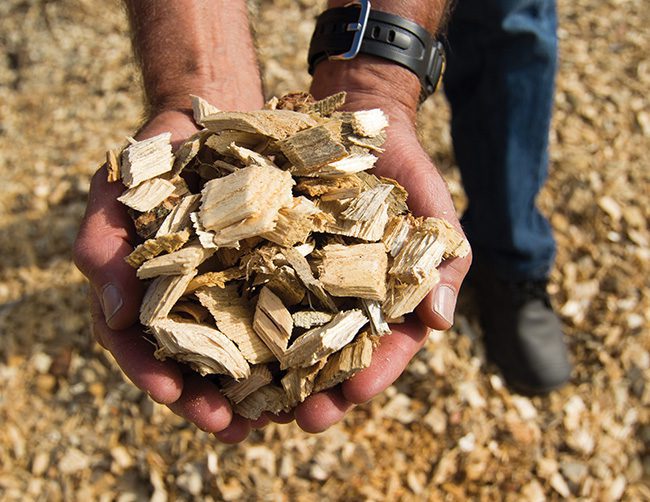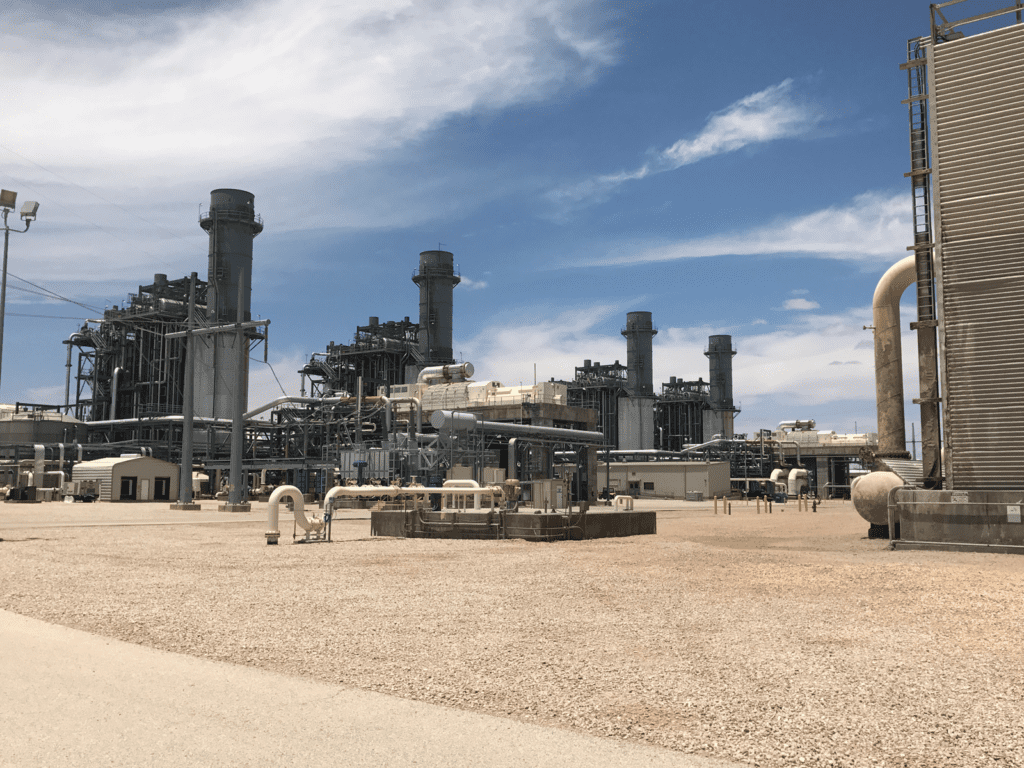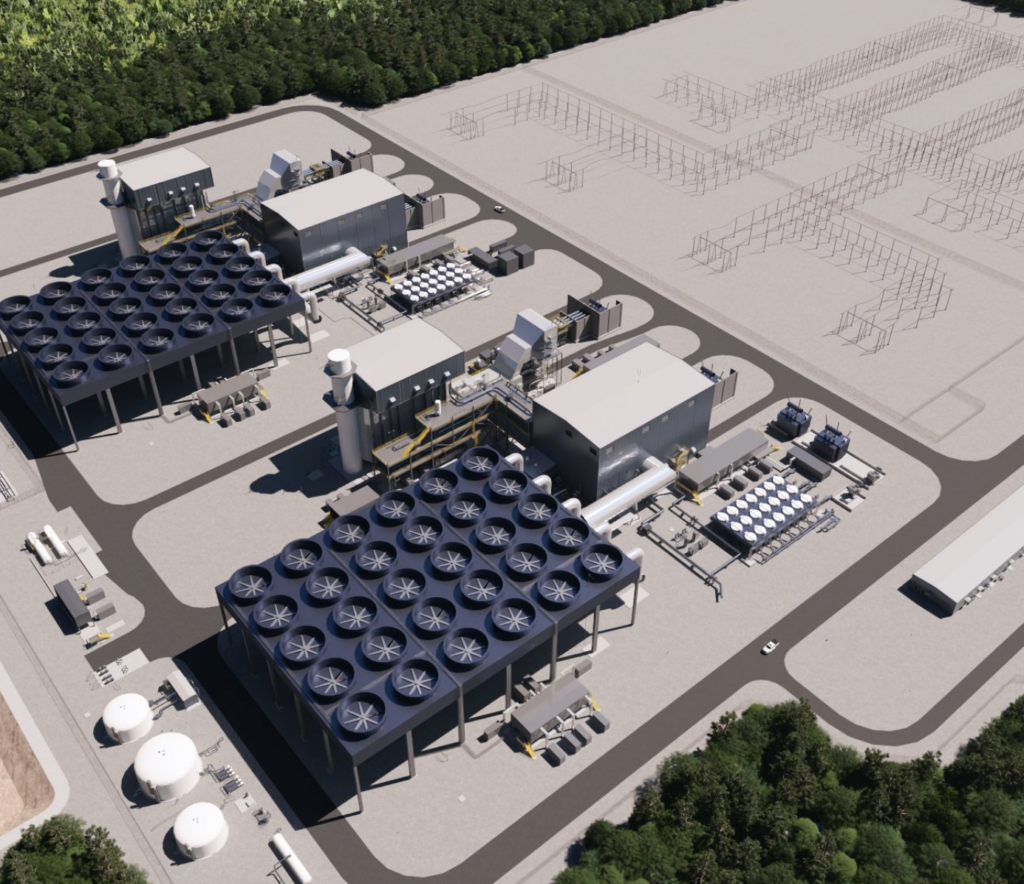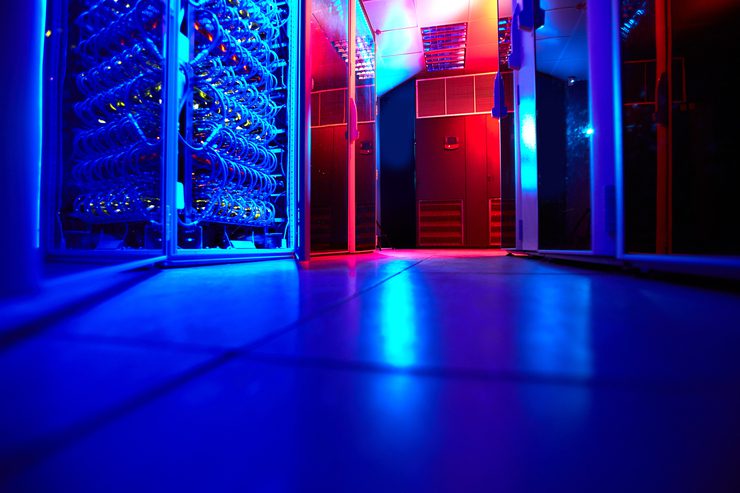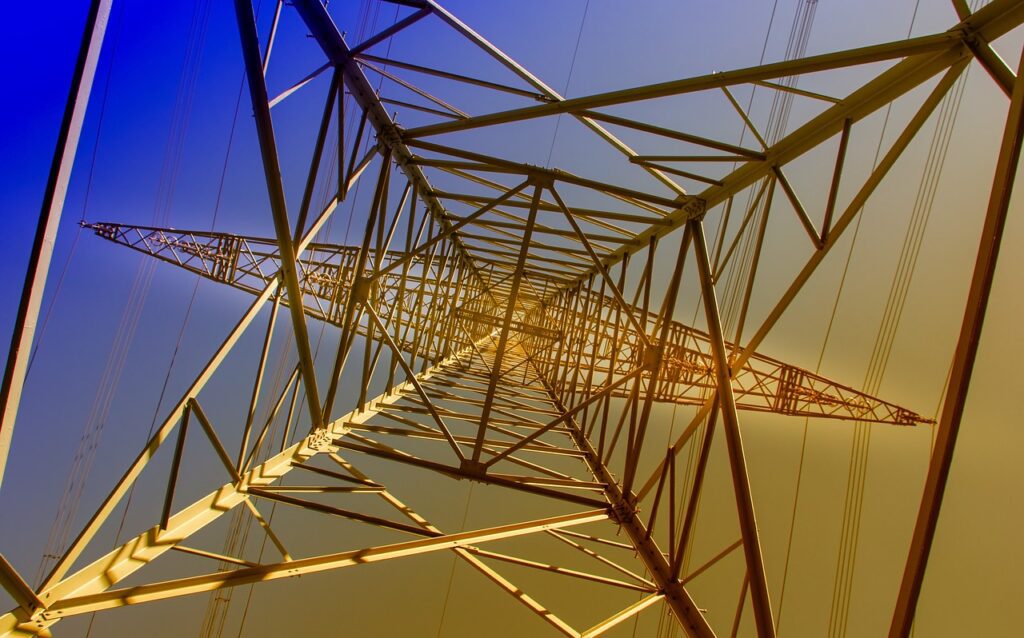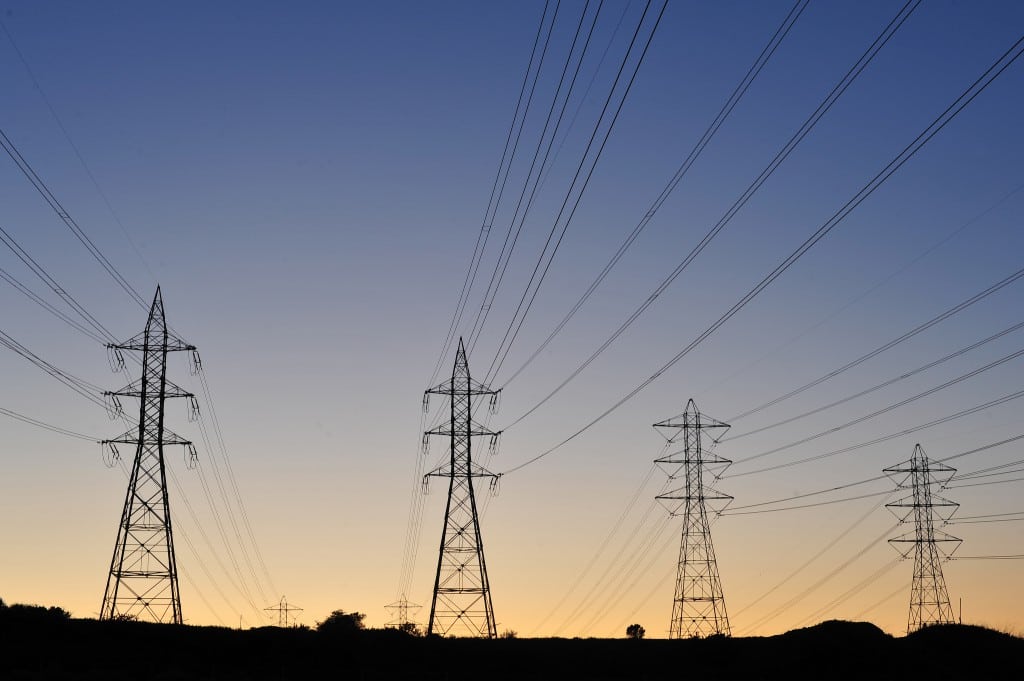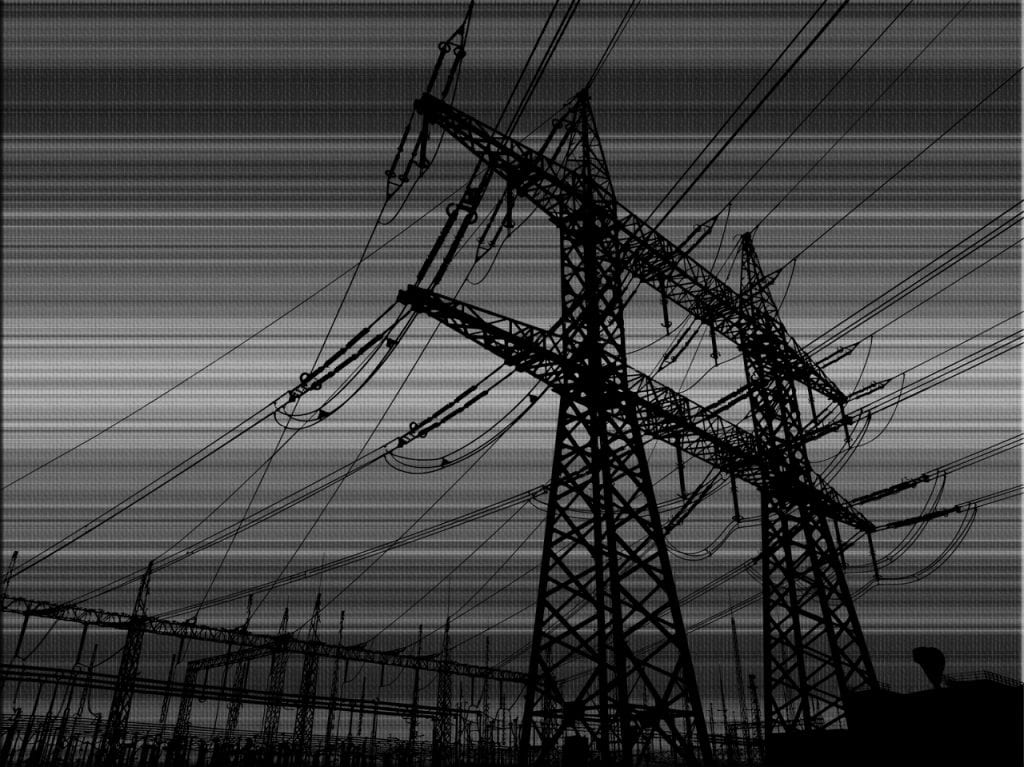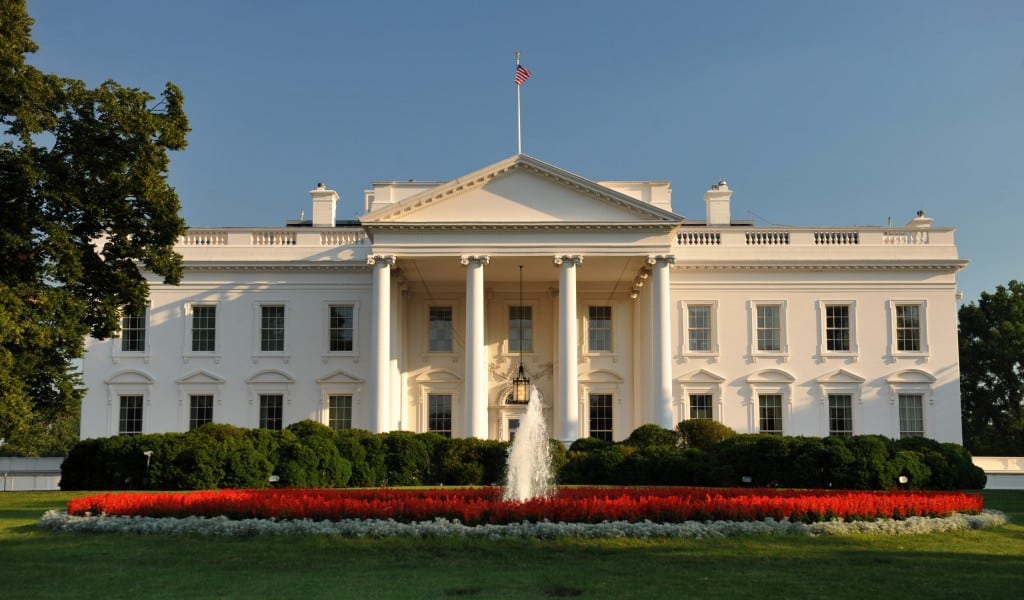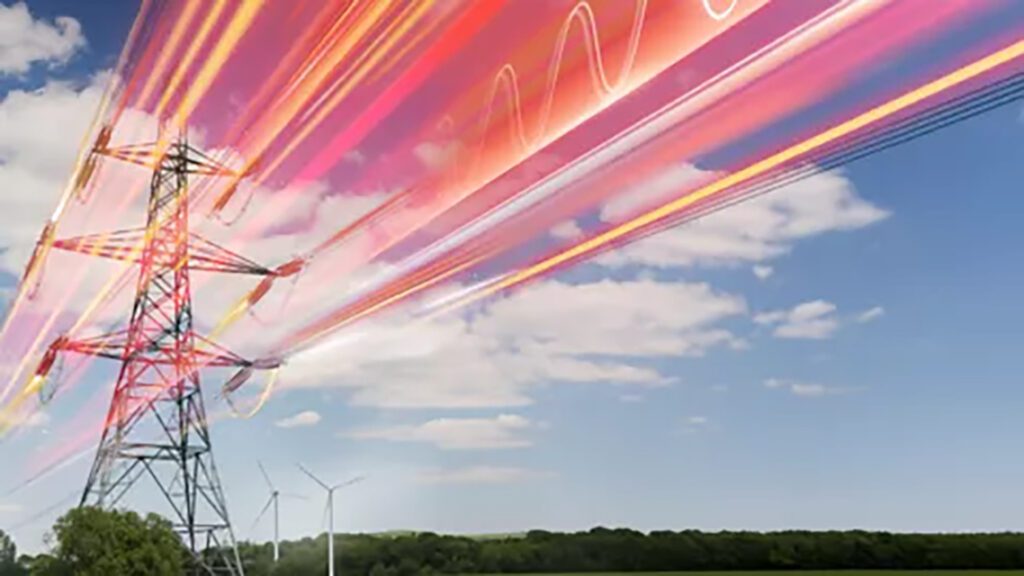In a significant push toward modernizing America’s aging grid infrastructure, the Biden administration, in partnership with 21 states, has launched the Federal-State Modern Grid Deployment Initiative. The measure marks the latest triumph for transmission and distribution (T&D), which has seen “lumpy” progress in recent decades.
The initiative unveiled on May 28 essentially seeks to establish a partnership between the federal government and partner states to achieve and accelerate progress in resolving shared grid challenges and opportunities. These include “increased load growth, a rapidly changing energy landscape, aging infrastructure, and new grid-enhancing technologies,” while prioritizing power reliability and affordability, the White House said on Tuesday.
The White House said it has so far secured commitments from Arizona, California, Colorado, Connecticut, Delaware, Hawai‘i, Illinois, Kentucky, Maine, Maryland, Massachusetts, Michigan, New Jersey, New Mexico, New York, North Carolina, Oregon, Pennsylvania, Rhode Island, Washington, and Wisconsin.
Under mutual federal-state commitments, the federal government and states will seek to explore ways to accelerate near-term deployment of more advanced commercially available grid technologies to modernize the grid and expand its capabilities on new and existing T&D lines. In addition, the joint commitments will seek to increase state and federal cooperation for both interregional and intraregional transmission planning efforts across regions, including via Regional Transmission Organizations (RTOs) and Independent Service Operators (ISOs). State and federal governments also pledged to “work collaboratively with solution providers, industry, labor organizers, and trusted validators to build a diverse workforce.
While the joint commitments spearhead a “holistic energy strategy,” they also recognize the diverse nature of grid challenges and opportunities across states. The initiative will allow states to explore executive and legislative remedies for grid capacity challenges, facilitate the use of advanced technologies through planning and incentives, maximize federal support, assess and promote the benefits of new technologies, and share insights across states. The flexible approach seeks to ensure that each state can tailor their strategies to their unique circumstances, the White House said.
The federal government’s role will rest on cultivating a national focus on grid innovation while “promoting awareness of power challenges as a strategic and economic priority nationwide.” In addition, the federal government will provide technical and financial assistance, promote modern technologies through Power Marketing Administrations, foster ongoing dialogue among stakeholders, and continuously update and share advancements in grid technology and policy.
A Converging Storm of Drivers
The collaborative initiative is the newest measure in a growing list of aggressive measures to jumpstart grid modernization and expansion. While the power industry has called for a holistic modernization of the bulk power system for decades to enable more efficient and reliable power generation and delivery, action has often been piecemeal and catered to changing market and policy forces.

The grid’s capabilities have come into sharper focus in the last three years, given a converging storm of drivers. Among external pressures are climate change impacts—and their ensuing and debilitating extreme weather events that have strained reliability. At the same time, the power industry has marked a dramatic shift in its generation profile. Grid operators across the country have identified billions in potential transmission investments that could facilitate an efficient shift toward renewables and distributed energy resources (DERs) but also ensure reliability as more major resources are retired.
A newer concerning driver is a projected surge in power demand. The North American Electric Reliability Corp. (NERC), in its most recent (December 2023) Long-Term Reliability Assessment (LTRA), said its aggregated assessment area summer peak demand forecast is expected to rise by over 79 GW, while its aggregated winter peak demand forecasts are increasing by nearly 91 GW. It noted the growth rates have grown sharply since the 2022 LTRA, “reversing a decades-long trend of falling or flat growth rates.” NERC suggests the surge will be driven by electrification and projections for electric vehicle growth. In April, however, the reliability organization warned of wildcard growth from large-scale loads—including data centers, artificial intelligence (AI), and potentially, investments in hydrogen fuel production. Research institute EPRI on May 28 warned data centers could consume up to 9% of U.S. electricity generation by 2030—“more than double the amount currently used.”
The demand growth anticipated by RTOs is as stunning. PJM in January said it expects its 13-state footprint’s energy use will increase nearly 40% by 2039, from 800 TWh to about 1,100 TWh. The Electric Reliability Council of Texas (ERCOT) in April said it is bracing for a load growth projection of about 152 GW by 2030—40 GW higher than the same forecast a year before. Overall, grid planners forecast peak demand growth of 38 GW through 2028, requiring rapid planning and construction of new generation and transmission, noted consulting group Grid Strategies in December 2023. But, it warned: “This is likely an underestimate—several more recent updates are adding additional GWs to that forecast. Next year’s forecast is likely to show an even higher nationwide growth rate.”
An Emerging Holistic Approach to T&D Modernization, Expansion
For now, assuming even moderate growth and high clean energy growth, 54,500 GW-miles of new transmission will be needed nationwide by 2035—a 64% increase from today’s transmission system—the Department of Energy (DOE) estimates in its October 2023–issued National Transmission Needs Study. The triennial “state of the grid” report (formerly a “congestion study” which in 2023 included forward-looking attributes) underscored a pressing need for additional transmission infrastructure in nearly all U.S. regions for reliability and resilience.

In particular, it emphasized the already “clogged interconnection queues,” which sat at 2,000 GW at the end of 2022, according to data from Lawrence Berkeley National Laboratory (LBNL). In an April update, LBNL said the grid connection backlog surged a stunning 30% in 2023 to nearly 2,600 GW—95% of which is solar, battery storage, and wind energy. “Active capacity in U.S. interconnection queues increased nearly eight-fold over the last decade and is now more than twice the total installed capacity of the existing U.S. power plant fleet,” the lab underscored. “The large backlogs, wait times, and withdrawal rates in the queues suggest persistent interconnection and transmission challenges and highlight the need to improve institutional processes, some examples of which are underway.”
Some improvements are already underway. In July 2023, FERC adopted Order 2023, “which requires substantial reforms to interconnection procedures such as utilizing a cluster (first-ready, first-served) rather than a serial (first-come, first-served) approach, higher deposits and readiness requirements to enter the queue, and stricter timelines and penalties,” the lab noted. But while “Order 2023 represents a significant step in the right direction toward addressing these interconnection challenges,” implementation across the U.S. is still underway. “Several regional grid operators such as MISO, CAISO, PJM, and ERCOT have already implemented or proposed additional reforms that go beyond the requirements of Order 2023,” it said.
An Evolving Legal and Regulatory Landscape
Utilities have so far struggled to keep pace with their massive infrastructure demands. According to investor-owned utility (IOU) trade group Edison Electric Institute (EEI), utilities invested upwards of $168 billion across the U.S. electric grid in 2023, with 18% spent on transmission infrastructure ($30.7 billion) and 34% spent on distribution infrastructure ($57.1 billion). Most went to capacity expansions, conventional replacement, and hardening. Only about 7% of total transmission and distribution CAPEX went toward advanced technologies.

Despite these supercharged investments, utilities still face substantial barriers. These range from pervading financing issues, which include cost recovery mechanisms that don’t always align with the rapid deployment of innovative technologies. Supply chain limitations and rising costs also persist, posing risks that could potentially delay or derail projects. These issues underscore a dire need for better planning and procurement strategies.
A more intense internal pressures driving the T&D modernization and expansion is a large-scale push by states and the federal government. In its Pathways to Commercial Liftoff: Innovative Grid Deployment report issued earlier this month, the DOE noted that state-level grid modernization regulation and legislative yearly actions have increased “approximately 2-3x since 2017.”
States, notably, have long been the arbiters of transmission permitting within their boundaries, including for siting, environmental review, and eminent domain. That has posed a substantial bottleneck for transmission lines crossing state lines.
The Energy Policy Act of 2005, however, carved out a more significant federal role in certain transmission siting decisions, establishing a “backstop” siting authority for the Federal Energy Regulatory Commission (FERC) that authorized the federal entity to issue permits for the construction or modification of transmission facilities in certain circumstances in areas designated by the Secretary of Energy as “National Interest Electric Transmission Corridors” (NIETCs)—areas experiencing or facing capacity constraints.
While two federal appeals courts in 2009 and 2011 barred FERC and the DOE from leveraging the backstop siting authority, the 2021 Infrastructure Investment and Jobs Act (IIJA) amended Section 216 of the Federal Power Act (FPA) to address issues identified in the decisions. Over the past two years, DOE and FERC proposed new rules to implement their amended authority, which has led to swift action.
Tackling Siting, Permitting, Environmental Hurdles
The DOE, prominently, has set out ambitious targets as part of a “holistic, multifaceted approach to grid improvements.” One bold initiative seeks to upgrade 100,000 miles of transmission lines over the next five years—by 2029. In October 2023, the DOE’s Grid Deployment Office (GDO) announced three “shovel ready” interregional transmission lines (a combined 3.5 GW capacity) that would receive the first $1.3 billion tranche of $2.5 billion in federal funding designated under the Transmission Facilitation Program (TFP), a revolving fund enacted by the 2021 IIJA. The federal investment and initial cost recovery mechanism serves as “capacity contracts,” where the DOE serves as an “anchor customer” to buy up to 50% of planned line rating for up to 40 years and to sell the contract to recover costs.
The projects include TransCanyon’s Cross-Tie 500 kV line connecting Utah and Nevada; National Grid’s Twin States Clean Energy Link between New England and Québec; and Southline’s double-circuit 345-kV line from Hidalgo County, New Mexico, to Pima County, Arizona. On April 25, the DOE added a $331 investment in another conditional project from the first round of the TCP capacity contract applications: the Southwest Intertie Project, which is slated to bring wind energy from Idaho to Southern Nevada. Construction of the 285-mile, 2-GW line is slated to begin in 2025.
In late 2023, the DOE also doled out $3.5 billion in federal funding—marking the “largest single direct investment in critical grid infrastructure ever”—to 58 projects spearheaded by major U.S. power stakeholders to improve grid flexibility and boost power system resiliency as the first competitive selections under the IIJA Grid Resilience and Innovation Partnerships (GRIP) Program. Sixteen projects, a total of up to $919 million in federal funding, garnered funding for “comprehensive transformational transmission and distribution technology solutions that will mitigate weather hazards across a region or within a community, including wildfires, floods, hurricanes, extreme heat, extreme cold, and extreme weather events that can cause a disruption to the power system,” it noted.
And more recently, on May 8, the DOE identified 10 preliminary NIETCs. The measure is historic, given no NIETCs currently exist. (While the DOE designated two corridors in the Mid-Atlantic and Southwest NIETCs in 2007, the Ninth Circuit vacated the effort in 2011.) The DOE’s preliminary designations—informed by the findings in DOE’s October 2023–issued National Transmission Needs Study—identify three areas in the East, five in the Central U.S., and one in the West.

If finalized, the preliminary NIETCs could be prioritized for federal support and regulatory streamlining to accelerate essential upgrades and expansions. As crucially, FERC can grant permits for transmission lines sited within a NIETC if states don’t have the authority to site the line, have not acted on an application in more than a year, or deny an application.
A NIETC designation can also critically unlock federal financing to spur the construction of transmission infrastructure. That includes the $2.5 billion designated by the Infrastructure Investment and Jobs Act (IIJA) under the Transmission Facilitation Program, as well as direct loans through the Transmission Facility Financing Program under the Inflation Reduction Act (IRA).
While the DOE did not say when it intends to issue final designations, it noted that the action initiates Phase 2 of a four-phase non-binding process it unveiled in December 2023. (In Phase 1, the DOE said it actively sought public feedback, including from public and private entities, on particular opportunities across the country where the need for transmission is in the national interest. After a 45-day comment period on the preliminary designations closes on June 24, 2024, the DOE will kick off Phase 3, likely in the fall, and conduct an in-depth NIETC evaluation and a comprehensive study of environmental impacts pursuant to the National Environmental Policy Act (NEPA). That phase may narrow the preliminary NIETC designation list.) Final designations, as part of Phase 4, may be issued next year, though that timeframe is unclear given environmental reviews, the DOE said.
At the end of April, meanwhile, the DOE issued a final rule that establishes the Coordinated Interagency Transmission Authorization and Permits (CITAP) program to directly tackle permitting efficiency. “On average, federal permitting for a new electric transmission line takes about four years,” and in “extreme cases,” over a decade, the agency explained. “Many factors can contribute to lengthy transmission development timelines, such as prolonged and fractured planning processes, difficulty securing financing, and the need to navigate complex environmental permitting processes.”
The program does essentially three things, as Energy Secretary Jennifer Granholm explained to reporters on April 24. First, “DOE will be the main point of contact as the lead agency, coordinating between developers and federal agencies,” she said. This is a huge improvement from the status quo because developers routinely have to navigate several independent permitting processes throughout the federal government.”
CITAP, prominently will also “stick to a two-year deadline,” Granholm said. “It sets a binding two-year schedule for federal agencies to issue authorizations and permits, and that’s going to cut in half the average time developers spend acquiring permits.” Finally, for the first time, DOE will require transmission developers to develop a public participation plan before they apply for permits. “And that will ensure a greater amount of success in the permitting process and in the acceptance of the transmission.”

To boost the expediency of environmental reviews, meanwhile, the DOE on April 30 finalized a categorical exclusion—the simplest of three types of review established by the National Environmental Policy Act (NEPA)—for upgrading and rebuilding T&D lines. (The rule also adds categorical exclusions for certain energy storage systems and solar PV systems.) The measure removes mileage limitations (which previously applied to power lines of 20 miles in length or less), adds options for relocating within an existing right-of-way or previously disturbed or developed lands, and specifies conditions for widening a right-of-way.
According to the DOE, the rule bolsters prospects for T&D line upgrades and rebuilds, including allowing the replacement of components with more efficient or resilient technology, such as reconductoring. While most of the existing grid uses conductors with a steel core, conductor designs with composite or carbon cores are being adopted. “Advanced conductors provide a variety of benefits, including increased capacity. By increasing the capacity of power lines, it is possible to integrate renewable energy and other sources of electricity into the grid without the need to build new power lines,” it noted.
FERC Spearheads Transmission Reforms
FERC has also taken on significant actions on grid modernization in recent years. In 2021, it finalized Order No. 881, which requires transmission owners to use ambient-adjusted ratings to improve the accuracy of transmission line thermal ratings. Orders No. 896 and 897, issued in June 2023, seek to enhance transmission planning for extreme weather events. FERC Order No. 2222, issued in September 2020, better enables DERs to participate in power markets run by regional grid operators. And, as discussed above, FERC Order No. 2023, finalized in July 2023, involves significant reforms to the interconnection procedures for energy projects.
But FERC’s most momentous effort came earlier this month, with a 2–1 vote to finalize Order No. 1920, which marked “the first time in more than a decade that FERC has addressed regional transmission policy—and the first time the Commission has ever squarely addressed the need for long-term transmission planning.”
Order No. 1920, issued on May 13, is a comprehensive attempt to reform FERC’s policies regarding regional transmission planning and cost allocation. It mandates transmission providers to engage in long-term planning processes over a 20-year timeframe, taking into account the evolving resources and demands. While the final rule did not include a proposed measure to require transmission providers to obtain state agreement on a cost allocation method, it does introduce a six-month engagement period for negotiation with state entities. Transmission providers are still required to file a proactive ‘backstop’ cost allocation method.
The rule also stipulates the integration of dynamic line ratings and advanced power flow control devices in regional transmission evaluations to enhance efficiency and cost-effectiveness. However, FERC chose not to restrict the Construction Work in Progress (CWIP) Incentive for long-term projects. It also chose not to adopt a federal Right of First Refusal (ROFR) or any changes to Order No. 1000’s nonincumbent transmission developer reforms, suggesting it will continue to consider potential federal ROFR reforms in the future. It did, however, adopt ROFR for “certain ‘right-sized’” replacement facilities.
Finally, the rule requires enhanced transparency and coordination across regional and local planning processes are also mandated to ensure the optimal sizing of replacement transmission facilities.
The Tangled Currents of Public Opinion
Reactions to the Order 1920 were swift—but, so far, mixed. The National Association of Regulatory Utility Commissioners (NARUC) suggested the rule “significantly diminished” state roles with respect to transmission planning and cost allocation.” NARUC Executive Director Greg R. White noted the group has been working with FERC in a joint federal-state task force to formally explore transmission-related topics since 2021—with its last meeting held in February.
A key concern has been that state and federal utility regulators are tasked with addressing issues on how to plan and pay for new transmission development and navigating related jurisdictional issues, it has said. “We hope there will be future opportunities to ensure that state voices are heard,” White said.
FERC’s sole dissenting commissioner Mark Christie, meanwhile, suggested the rule promotes a renewable agenda and would harm consumers. Chairman Willie Phillips and Allison Clements, however, argued that the cost of “continued inaction is immeasurable.” They suggested that failure to act now would hamper reliability and resilience to the grid “while leaving customers holding the bag for the inevitably more costly upgrades in the future.”
Industry, too, offered mixed views. Many trade groups applauded FERC’s work to respond to the changing generation mix and shifting demand, but some suggested FERC’s stopping short of adopting a right of first refusal for jointly owned transmission companies poses issues.
As EEI CEO Dan Brouillette noted: “While we would have liked to see FERC adopt a right of first refusal for jointly owned transmission facilities, we are encouraged that the Commission created those rights for other projects and that they will continue to consider the joint ownership proposal going forward.”
But Paul Cicio, chair of the Electricity Transmission Competition Coalition, an industry group committed to increasing competition in transmission infrastructure, said the group was deeply concerned about the potential impact of the right-sizing ROFR. “The Federal Power Act is a consumer protection statute,” he said. “FERC should keep that in mind as it continues to regulate transmission.”
WIRES, a trade group that promotes investment in electric transmission and whose members include transmission owners with investor-owned, public, and cooperative business models, like EEI urged FERC “to continue to consider other potential federal ROFR issues that could facilitate collaboration and more efficient and cost-effective transmission for the benefit of consumers.” WIRES Executive Director Larry Gasteiger also applauded FERC’s rejection of its proposed limitations of the CWIP incentive. “We agree with FERC that action on incentives should be done in a holistic manner; otherwise, we risk sending the wrong signals to the investment community at precisely the wrong time,” he said.
Finally, the Working for Advanced Transmission Technologies (WATT) Coalition, a group that advocates for policy that supports wide deployment of Grid-Enhancing Technologies (GETs), meanwhile applauded FERC for requiring advanced power flow control, dynamic line ratings and transmission switching in regional transmission plans.
“These technologies are often cost-effective tools to increase grid capacity and improve flexibility to manage outages and other contingencies.” GETs “will be vital to achieving the seven economic and reliability benefits in the rule, especially production cost savings, reducing grid congestion and improving performance in extreme weather,” it said.
—Sonal Patel is a POWER senior editor (@sonalcpatel, @POWERmagazine).


